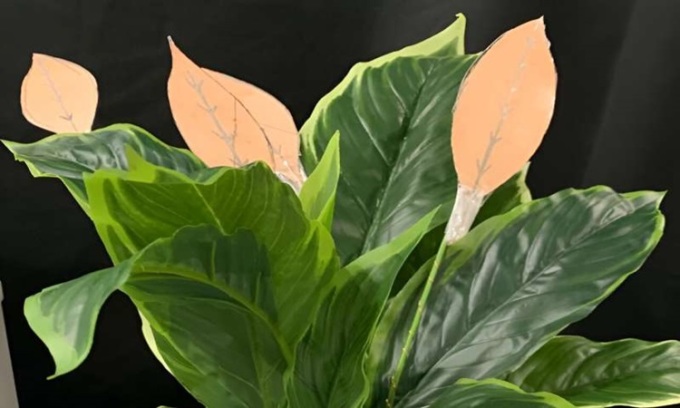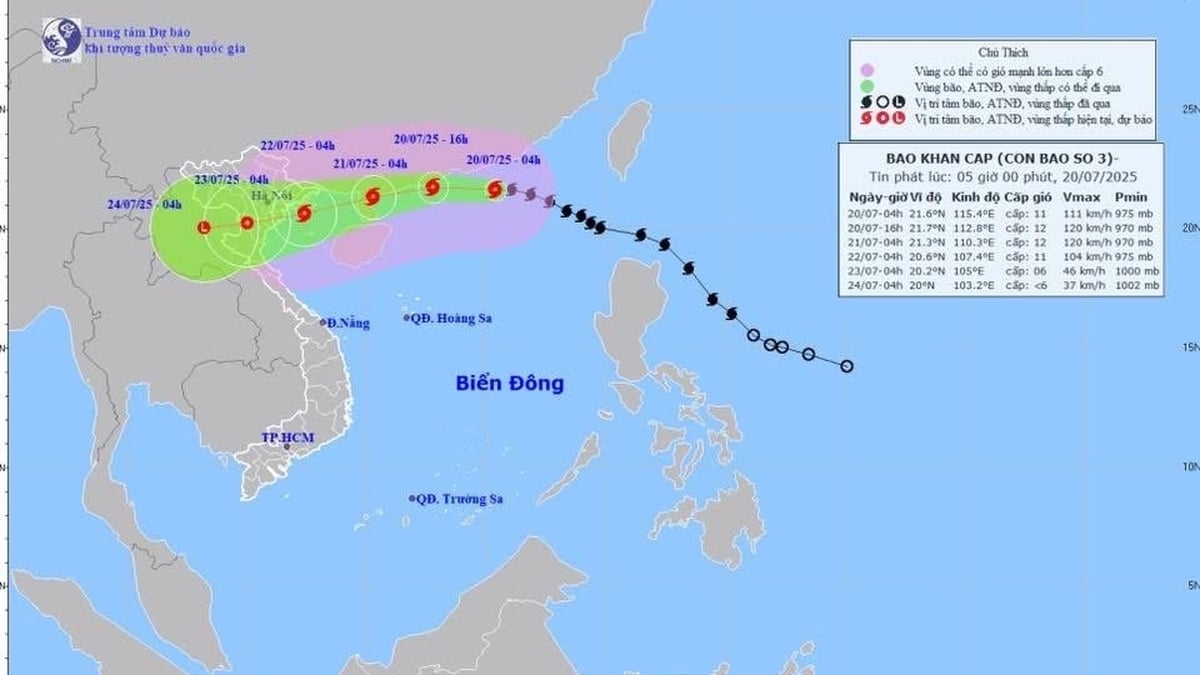Researchers develop mini "power plants," small leaf-shaped devices that generate electricity from the wind blowing through or raindrops falling to the ground.

The artificial tree produces electricity with a beige leaf generator. Photo: ACS Sustainable Chemistry & Engineering
In a study published in the journal ACS Sustainable Chemistry & Engineering, a team of experts from China, the UK and the US tested energy harvesting devices by combining them with artificial trees, Phys.org reported on January 17.
Electrical energy can be produced naturally in a number of ways. For example, solar cells convert light energy from the Sun while wind turbines convert the momentum of moving air. However, these methods often depend on a source, so they are only effective when that source is available. For example, solar cells cannot operate after sunset and windless days do not provide much energy.
Recently, multi-source energy harvesting devices have emerged as a solution to harness energy from different renewable sources in one design, maximizing potential yield. Therefore, researcher Ravinder Dahiya at Northeastern University, USA, and colleagues wanted to create such a multi-source device, which could generate electricity from both wind and rain.
The team built two types of energy-harvesting devices: a triboelectric nanogenerator (TENG) to harvest momentum from wind and a droplet-based energy generator (DEG) to harvest energy from falling raindrops. The TENG consists of a layer of nylon nanofibers sandwiched between layers of polytetrafluoroethylene, also known as Teflon, and copper electrodes.
Static electricity is created and converted into electricity as the layers press against each other. Teflon is also used to make DEG, which is waterproof and coated with conductive fabric that acts as an electrode. When a raindrop hits an electrode, it creates a voltage difference, creating an electric current. Under optimal conditions, the TENG produces 252 V of electricity and the DEG provides 113 V, but only for a short time.
The team placed the DEG on top of the TENG and combined leaf-shaped versions on artificial trees. When exposed to conditions that simulated natural wind and rain, the leaf generators were able to light up 10 LEDs for a limited time. This “electric tree” device could be scaled up into larger systems or networks to generate clean energy from natural sources.
An Khang (According to Phys.org )
Source link


































































































Comment (0)